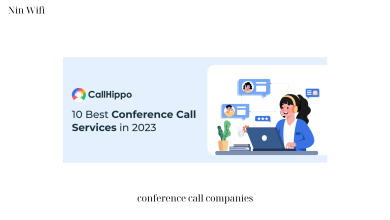Next-Generation Cloud Computing: What is Elastic Cloud Enterprise?
Love Calculator
The way we store and access data has been changed by cloud computing. With its flexibility and scalability, it has become a go-to solution for businesses of all sizes. But as technology continues to evolve, so do the demands of modern businesses. That’s where elastic cloud enterprise comes in. This next-generation cloud computing solution offers even more flexibility and scalability, making it a game-changer in the industry. But what is elastic cloud enterprise, and how can it benefit your business? Let’s find out.
What is Elastic Cloud Enterprise?
The identical product that provides Elastic Cloud hosting, known as Elastic Cloud Enterprise, or ECE, is available for installation on hardware and in the environment of your choice. Elastic Cloud Enterprise can be installed on bare metal systems, public or private clouds, or even both. The services support a wide range of configurations because they are all contained within the container.
If your company’s data cannot be kept in a public cloud, for example if sensitive or managed data cannot leave your internal network, Elastic Cloud Enterprise may be the best option. You may reuse the on-premises infrastructure you already invested in by using Elastic Cloud Enterprise.
You can use Elastic Cloud Enterprise for centralized cluster administration for provisioning, Monitoring, scaling, Replication, upgrades, Backup and restore if you need to manage many Elastic installations across pods or geographies.
Elastic Cloud Enterprise, which imposes unified user, data governance, backup, and versioning policies, centralizes cluster management. Improved management can increase hardware utilization while lowering overall expenses.
The Architecture of the Elastic Cloud Enterprise

Service-Oriented Architecture
A number of key services are part of an ECE installation. Using this service-oriented design, you can:
Easily scale platforms. Since each service can be scaled independently, various services may have varying performance and reliability needs.
By using APIs to access services, operational administration is made simpler and modifications and upgrades to one service may be made without having an impact on the other services.
Each service should be individually deployed in a separate Docker container. Your entire installation will be more secure when used in conjunction with precise permissions to read and write application state. The damage is contained in a single container along with a portion of the application state even if a service is compromised.
Containerization using Docker
Services are set up as Docker containers, which streamlines administrative tasks and makes it simple to set up comparable environments for testing and staging. To ensure that each node in the cluster has guaranteed access to a certain percentage of host resources, each cluster node is operated inside of a Docker container.
Security is enhanced by containerization. Containers will not be permitted access to the platform under the presumption that any cluster can be compromised. The same is true for services: each service is limited to reading and writing just the system state that pertains to it. An attacker won’t have access to the keys to the other services, and the platform won’t be affected even if some services are compromised.
Cluster state coordination using ZooKeeper
The status of each cluster running in the ECE as well as the installation status are both stored by ZooKeeper. In addition, ZooKeeper serves as the event bus for all other services.
A distributed data store with strong consistency is called ZooKeeper. It offers a structure resembling a file system, where each node represents both a directory with child entries and a file with data. To distinguish them from the actual nodes that ZooKeeper runs on, these nodes are referred to as znodes.
ZooKeeper is built to maintain consistency even when a network partition occurs; writes are rejected until the majority of ZooKeeper servers can verify that they are linear and that they are being made.
ZooKeeper can function as an event bus where one service can inform another by writing to an observed znode by setting clocks on znodes. Znodes can have linked access control lists (ACLs) that give multiple services granular access to the system state.
Easy access through the Cloud UI
The Cloud user interface gives managers web-based access to administer and keep an eye on your ECE installation. A lot of the features offered by Cloud UI are also accessible via the API.
You can carry out the following tasks using the Cloud UI and API:
- Manage installation-wide parameters, interact with the runner (the server you used to install ECE), and set up your deployment.
- Using statistics from Metric beat and Filebeat, keep an eye on your ECE installation.
- Create and manage Kibana and Elasticsearch clusters.
The Advantages of Elastic Cloud Technology
IT teams can rapidly and easily add or release processing, memory, and storage resources as needed by the company while only paying for the resources they use thanks to elastic cloud services.
There are numerous advantages to this fundamental shift of enterprise computing:
- Extensibility with ease. IT teams can swiftly provide the precise services and infrastructure required to support the business thanks to on-demand computing resources.
- High availability. It is simple to prevent unwanted service delays or interruptions because additional resources and redundancy can be added as needed.
- Increased backup. IT teams can take advantage of more adaptable, dependable, and cheap backup and recovery solutions by having simple access to external computing resources.
- Discount. Businesses can cut their IT spending by only paying for the resources they use and by forgoing the requirement for infrastructure improvements.
- Management is simpler. IT teams no longer need to worry about implementing, maintaining, and upgrading particular components of their IT infrastructure thanks to cloud services.
- More capacity. Almost infinite storage is available with elastic cloud storage.
Wrapping It Up
In conclusion, Elastic Cloud Enterprise is a game-changing technology that provides an all-in-one solution for next-generation cloud computing. With its flexibility, scalability, and ease of use, it helps organizations of all sizes to efficiently manage their cloud infrastructure and applications.
By leveraging the power of Elastic Cloud Enterprise, businesses can achieve greater agility, reduce costs, and improve their overall productivity. As cloud computing continues to evolve, Elastic Cloud Enterprise is poised to play a key role in shaping the future of this rapidly growing industry.


